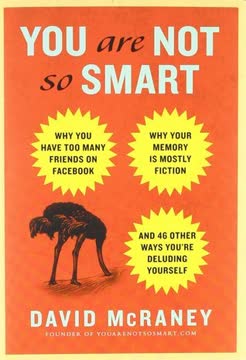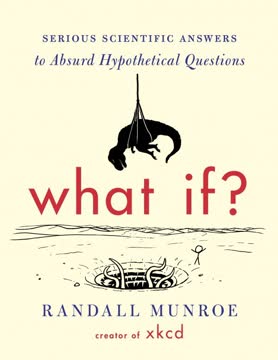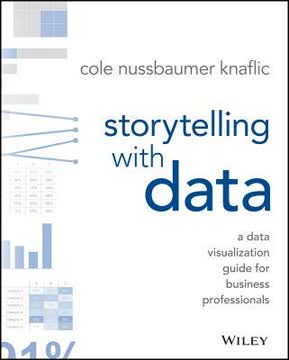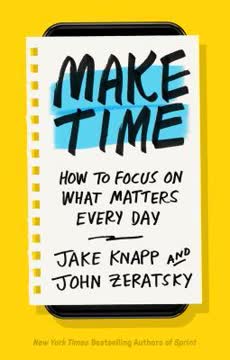Key Takeaways
1. Visualization as a Tool for Understanding Complex Information
In a way, we're all visual now. Every day, every hour, maybe even every minute, we're looking and absorbing information via the web. We're steeped in it. Maybe even lost in it.
Information overload is a common challenge in our digital age. Visualization offers a powerful solution by:
- Simplifying complex data
- Highlighting patterns and relationships
- Engaging viewers through visual appeal
Effective visualization goes beyond aesthetics, focusing on:
- Clear concepts
- Contextual relationships
- Meaningful connections between facts
By transforming raw data into visual representations, we can navigate the sea of information more efficiently and gain deeper insights.
2. The Power of Concept in Information Design
If your concept is strong and clear, the information design doesn't have to be complex, or wall-sized, or interactive - or even colourful.
Concept is key in information design, serving as the invisible glue between data and visual representation. A strong concept can:
- Simplify complex information
- Transcend limitations of medium or format
- Effectively communicate ideas in minimal space
Effective concepts in information design:
- Are clear and focused
- Highlight relationships between data points
- Tell a story or reveal insights
By prioritizing concept over complexity, designers can create impactful visualizations that resonate with viewers and effectively convey information, regardless of the constraints of the medium.
3. Challenging Traditional Perspectives on Truth and Knowledge
If all truth is constructed, then deconstruction becomes useful. Really useful. If you deconstruct something, its meanings, intentions and agendas separate and rise to the surface very quickly – and everything quickly unravels.
Postmodern thinking challenges traditional notions of absolute truth and knowledge. This perspective:
- Recognizes the constructed nature of truth
- Encourages critical examination of information sources
- Promotes awareness of cultural and personal biases
Implications of this approach:
- Increased skepticism towards "grand narratives"
- Greater emphasis on diverse perspectives
- Recognition of the role of context in shaping knowledge
By embracing this mindset, we can develop a more nuanced understanding of the world and become more adept at navigating complex information landscapes.
4. Exploring Global Issues Through Data Visualization
Because every country is the best at something
Global comparisons reveal fascinating insights about our world. Data visualization can:
- Highlight unexpected patterns and relationships
- Challenge preconceived notions about countries and cultures
- Provide context for understanding complex global issues
Examples of global visualizations:
- Carbon emissions by country and industry
- International rankings in various fields
- Distribution of wealth and resources
By presenting global data visually, we can foster a better understanding of our interconnected world and inspire action on pressing issues.
5. The Impact of Postmodernism on Art, Culture, and Society
Overall, postmodern art says there's no difference between refined and popular culture, "high" or "low" brow. It rejects genres and hierarchies. Instead, it embraces complexity, contradiction, ambiguity, diversity, interconnectedness, and criss-crossing referentiality.
Postmodernism's influence extends far beyond art, shaping our understanding of:
- Cultural hierarchies and value systems
- The nature of truth and knowledge
- Social and political structures
Key aspects of postmodern thought:
- Rejection of grand narratives
- Embrace of diversity and multiple perspectives
- Focus on deconstruction and critical analysis
By adopting postmodern perspectives, we can develop a more nuanced understanding of our complex, interconnected world and challenge traditional power structures.
6. Uncovering Patterns in Everyday Life and Human Behavior
The idea is: let's not pretend that art can make meaning or is even meaningful. Let's just play with nonsense.
Pattern recognition in everyday life can reveal surprising insights about:
- Human behavior and decision-making
- Social and cultural trends
- The interconnectedness of seemingly unrelated phenomena
Examples of patterns explored:
- Relationships between diet, health, and environmental impact
- Correlations between seemingly unrelated factors (e.g., left-handedness and wealth)
- Recurring themes in media and popular culture
By examining these patterns, we can gain a deeper understanding of ourselves and the world around us, often challenging our preconceptions in the process.
7. Rethinking Our Relationship with Information in the Digital Age
So perhaps what we need are well-designed, colourful and – hopefully – useful charts to help us navigate. A modern day map book.
The digital age has transformed our relationship with information, necessitating new approaches to:
- Information consumption and processing
- Critical thinking and analysis
- Knowledge creation and sharing
Strategies for navigating the information landscape:
- Developing visual literacy
- Embracing diverse perspectives and sources
- Cultivating skepticism and critical thinking skills
By adapting our approach to information, we can become more effective consumers and creators of knowledge in an increasingly complex and interconnected world.
Last updated:
FAQ
What's "Information Is Beautiful" about?
- Visual Exploration: "Information Is Beautiful" by David McCandless is a visual exploration of data and information. It aims to present complex data in an accessible and engaging way through infographics and visualizations.
- Diverse Topics: The book covers a wide range of topics, from environmental issues like carbon emissions to cultural phenomena such as postmodernism and romantic relationships.
- Interconnected Facts: It focuses on the relationships between facts, providing context and connections that make information meaningful and easier to understand.
- Visual Miscellaneum: The book is described as a "visual miscellaneum," offering a series of experiments in making information both approachable and beautiful.
Why should I read "Information Is Beautiful"?
- Unique Perspective: The book offers a unique perspective on how information can be presented visually, making it easier to digest and understand.
- Broad Range of Topics: It covers a broad range of topics, appealing to readers with diverse interests, from science and politics to culture and lifestyle.
- Engaging Format: The use of colorful and well-designed charts and diagrams makes the book engaging and fun to read, even for those who might not typically enjoy data-heavy content.
- Innovative Approach: It challenges traditional ways of presenting information, encouraging readers to think about data visualization in new and creative ways.
What are the key takeaways of "Information Is Beautiful"?
- Visual Communication: Effective visual communication can make complex information more accessible and engaging.
- Interconnectedness of Data: Understanding the relationships between different pieces of data can provide deeper insights into various topics.
- Importance of Context: Providing context is crucial for making data meaningful and relevant to the audience.
- Concept Over Complexity: A strong and clear concept is more important than complex design; simplicity can be powerful.
How does David McCandless approach data visualization in "Information Is Beautiful"?
- Minimal Text: The book uses minimal text, relying heavily on diagrams, maps, and charts to convey information.
- Colorful and Engaging: It employs colorful and engaging visuals to capture the reader's attention and make data more appealing.
- Experimental Style: McCandless experiments with both new and old ways of visualizing information, focusing on subjects that spark curiosity.
- Humor and Playfulness: The book incorporates humor and playfulness, showing that data visualization can be both informative and entertaining.
What are some specific topics covered in "Information Is Beautiful"?
- Environmental Issues: Topics like carbon emissions and rising sea levels are explored through visual data.
- Cultural Phenomena: The book delves into cultural topics such as postmodernism, romantic relationships, and the evolution of marriage.
- Health and Lifestyle: It covers health-related topics like the effectiveness of health supplements and the impact of diet and exercise.
- Global Comparisons: International comparisons, such as which countries excel in certain areas, are presented in a visually engaging manner.
What is the significance of the "Billion-Dollar-O-Gram" in "Information Is Beautiful"?
- Financial Visualization: The "Billion-Dollar-O-Gram" visualizes billions of dollars spent per year across various sectors, providing a clear picture of financial priorities.
- Comparative Insight: It allows readers to compare spending across different areas, highlighting disparities and areas of interest.
- Contextual Understanding: By presenting financial data visually, it offers context and helps readers understand the scale and impact of financial decisions.
- Engagement and Clarity: The visual format makes complex financial data more engaging and easier to comprehend.
How does "Information Is Beautiful" address the concept of postmodernism?
- Definition and Characteristics: The book defines postmodernism as a style that is ironic, parodying, and self-conscious, often blurring the lines between high and low culture.
- Truth and Deconstruction: It discusses the postmodern perspective on truth as constructed rather than absolute, emphasizing the role of deconstruction in understanding meaning.
- Cultural Impact: Postmodernism's impact on art, culture, and society is explored, highlighting its embrace of complexity, diversity, and interconnectedness.
- Critique of Modernism: The book contrasts postmodernism with modernism, critiquing the latter's focus on order and absolute truth.
What are some of the best quotes from "Information Is Beautiful" and what do they mean?
- "A visual miscellaneum": This phrase captures the essence of the book as a collection of diverse and visually interconnected facts and ideas.
- "Concept is the invisible glue": This quote emphasizes the importance of a strong concept in data visualization, suggesting that clarity of idea is more crucial than complexity of design.
- "Playing with nonsense": Reflects the playful and experimental approach to data visualization, encouraging readers to explore and enjoy the process of understanding information.
- "Truth has become social": Highlights the postmodern view that truth is constructed collectively, rather than being an absolute, individual discovery.
How does "Information Is Beautiful" explore environmental topics?
- Carbon Emissions: The book visualizes data on carbon emissions, comparing kilograms, tonnes, and megatons of carbon across different sectors and activities.
- Rising Sea Levels: It presents data on rising sea levels, offering insights into the potential impact and timeline of this environmental issue.
- Sustainable Practices: Topics like which fish are okay to eat are explored, providing guidance on sustainable consumption.
- Visual Impact: By using visualizations, the book makes complex environmental data more accessible and engaging for readers.
What is the "Sunscreen Smokescreen" about in "Information Is Beautiful"?
- Sunscreen Myths: The "Sunscreen Smokescreen" section addresses common myths and misconceptions about sunscreen and its effectiveness.
- Data Presentation: It presents data on sunscreen ingredients, their effectiveness, and potential health impacts in a clear and visual format.
- Consumer Awareness: The section aims to increase consumer awareness about the products they use and the science behind them.
- Engaging Format: By using infographics, the book makes the information more engaging and easier to understand for readers.
How does "Information Is Beautiful" address the topic of consciousness?
- Exploration of Consciousness: The book explores the concept of consciousness, encouraging readers to form their own opinions on what it means.
- Visual Representation: It uses visualizations to present different theories and ideas about consciousness, making the topic more accessible.
- Complexity and Simplicity: The book balances the complexity of the topic with simple, clear visuals that convey key ideas effectively.
- Encouragement of Inquiry: By presenting various perspectives, the book encourages readers to think critically and explore the topic further.
What is the "Moral Matrix" in "Information Is Beautiful"?
- Moral Perspectives: The "Moral Matrix" visualizes different moral perspectives, highlighting how they intersect and diverge.
- Cultural and Social Context: It provides context for understanding how moral values are shaped by cultural and social influences.
- Visual Clarity: The matrix format offers a clear and engaging way to compare and contrast different moral viewpoints.
- Encouragement of Dialogue: By presenting diverse perspectives, the book encourages readers to engage in dialogue and consider multiple viewpoints.
How does "Information Is Beautiful" use humor in data visualization?
- Playful Approach: The book incorporates humor and playfulness in its visualizations, making data more engaging and enjoyable.
- Jokes in Graphs: It explores the idea of making jokes in graphs, showing that data visualization can be both informative and entertaining.
- Breaking Conventions: By using humor, the book breaks traditional conventions of data presentation, encouraging creativity and innovation.
- Engagement and Accessibility: Humor makes complex data more accessible, helping to capture the reader's attention and maintain their interest.
Review Summary
Information is Beautiful received mixed reviews, with an overall rating of 4.12/5. Positive reviews praised its visually stunning infographics and interesting data presentation. Critics highlighted issues with data accuracy, questionable sources, and occasionally confusing visualizations. Some readers found it a fascinating coffee table book, while others criticized its lack of depth and scientific rigor. The book's creative approach to information visualization was generally appreciated, though its effectiveness in conveying complex topics varied.
Similar Books







Download PDF
Download EPUB
.epub digital book format is ideal for reading ebooks on phones, tablets, and e-readers.




